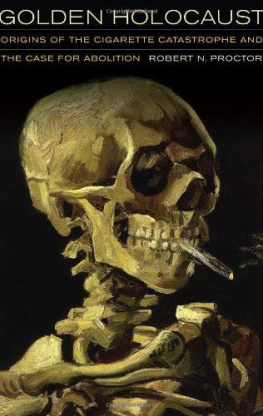R. E. Billings - Tobacco: Its History, Varieties, Culture, Manufacture and Commerce
Here you can read online R. E. Billings - Tobacco: Its History, Varieties, Culture, Manufacture and Commerce full text of the book (entire story) in english for free. Download pdf and epub, get meaning, cover and reviews about this ebook. year: 2008, publisher: IndyPublish.com, genre: Art. Description of the work, (preface) as well as reviews are available. Best literature library LitArk.com created for fans of good reading and offers a wide selection of genres:
Romance novel
Science fiction
Adventure
Detective
Science
History
Home and family
Prose
Art
Politics
Computer
Non-fiction
Religion
Business
Children
Humor
Choose a favorite category and find really read worthwhile books. Enjoy immersion in the world of imagination, feel the emotions of the characters or learn something new for yourself, make an fascinating discovery.

- Book:Tobacco: Its History, Varieties, Culture, Manufacture and Commerce
- Author:
- Publisher:IndyPublish.com
- Genre:
- Year:2008
- Rating:4 / 5
- Favourites:Add to favourites
- Your mark:
- 80
- 1
- 2
- 3
- 4
- 5
Tobacco: Its History, Varieties, Culture, Manufacture and Commerce: summary, description and annotation
We offer to read an annotation, description, summary or preface (depends on what the author of the book "Tobacco: Its History, Varieties, Culture, Manufacture and Commerce" wrote himself). If you haven't found the necessary information about the book — write in the comments, we will try to find it.
R. E. Billings: author's other books
Who wrote Tobacco: Its History, Varieties, Culture, Manufacture and Commerce? Find out the surname, the name of the author of the book and a list of all author's works by series.
Tobacco: Its History, Varieties, Culture, Manufacture and Commerce — read online for free the complete book (whole text) full work
Below is the text of the book, divided by pages. System saving the place of the last page read, allows you to conveniently read the book "Tobacco: Its History, Varieties, Culture, Manufacture and Commerce" online for free, without having to search again every time where you left off. Put a bookmark, and you can go to the page where you finished reading at any time.
Font size:
Interval:
Bookmark:

ITS
HISTORY, VARIETIES, CULTURE,
MANUFACTURE AND COMMERCE,
Is forced to crave your favor to defend it."
Or cause too deep for human search to find,
Makes earth-born weeds imperial man enslave,
Not little souls, but e'en the wise and brave!"
AMERICAN PUBLISHING COMPANY,
1875.
AMERICAN PUBLISHING CO.,
In the Office of the Librarian of Congress, at Washington, D.C.
Such different tempers twixt my friend and me?
I burn with heat when I tobacco take,
But he on th' other side with cold doth shake:
To both 'tis physick, and like physick works,
The cause o' th' various operation lurks
Not in tobacco, which is still the same,
But in the difference of our bodies frame:
What's meat to this man, poison is to that,
And what makes this man lean, makes that man fat;
What quenches one's thirst, makes another dry;
And what makes this man wel, makes that man dye.
Lures back to thought the flights of vacant mirth,
Consoles the mourner, soothes the couch of pain,
And wreathes contentment round the humble hearth;
While savage warriors, soften'd by thy breath,
Unbind the captive, hate had doomed to death.
My social box attends on me;
It warms my nose in winter's snow,
Refreshes midst midsummer's glow;
Of hunger sharp it blunts the edge,
And softens grief as some alledge.
Thus, eased of care or any stir,
I broach my freshest canister;
And freed from trouble, grief, or panic,
I pinch away in snuff balsamic.
For rich or poor, in peace or strife,
It smooths the rugged path of life.
A modern truly thou, and all our own!
Thou dear concomitant of nappy ale,
Thou sweet prolonger of an old man's tale.
Or, if thou'rt pulverized in smart rappee,
And reach Sir Fopling's brain (if brain there be),
He shines in dedications, poems, plays,
Soars in Pindarics, and asserts the bays;
Thus dost thou every taste and genius hit
In smoke thou'rt wisdom, and in snuff thou'rt wit.
CHARLES DUDLEY WARNER,
- Page
- Frontispiece .
- Tobacco Stalks .
- Tobacco Leaves .
- Bud and Flowers .
- Capsules . ( Fruit Bud. )
- Suckers .
- Primitive Pipe .
- Native Smoking .
- Old Engraving .
- The Contrast .
- John Rolfe .
- Virginia Tobacco Field, 1620 .
- Buying Wives .
- Growing Tobacco in the Streets .
- Natives Growing Tobacco .
- Destroying Suckers .
- Carrying Tobacco to Market .
- Enriching Plant-Bed .
- Shipping Tobacco .
- Old Engraving of Tobacco .
- Sir Walter Raleigh .
- English Gallants .
- Smoking in the 17th Century .
- Exhaling through the Nose .
- Old London Ale-house .
- Punishment for Snuff Taking .
- Silver Spittoons .
- The Negro Image .
- Tobacco and Theology .
- Weighing Smoke .
- Indian Pipe .
- Sculptured Pipe .
- Pipe of Peace .
- A Model Cigar .
- South Americans smoking .
- A War Pipe .
- Peace Pipe .
Font size:
Interval:
Bookmark:
Similar books «Tobacco: Its History, Varieties, Culture, Manufacture and Commerce»
Look at similar books to Tobacco: Its History, Varieties, Culture, Manufacture and Commerce. We have selected literature similar in name and meaning in the hope of providing readers with more options to find new, interesting, not yet read works.
Discussion, reviews of the book Tobacco: Its History, Varieties, Culture, Manufacture and Commerce and just readers' own opinions. Leave your comments, write what you think about the work, its meaning or the main characters. Specify what exactly you liked and what you didn't like, and why you think so.








